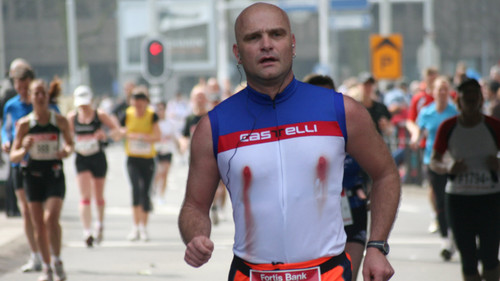How To Treat Chafed Nipples
Posted by Jack Miller on 22nd Nov 2021
Nipple chafing can be an extremely painful experience for both men and women, whether it is the result of hormonal changes or intensive exercise regimes, amongst other reasons. Here, we list some methods for quickly and efficiently treating chafed nipples whilst also providing you with steps you can take to prevent nipple chafing in the future.
What are the signs of chafed nipples?
The most common sign of chafed nipples is a burning and stinging sensation that you can feel in the nipple area. There are many symptoms to look out for, including redness, burning sensations, sores, scabs, bleeding, and cracked or flaking skin. These symptoms can be extremely difficult to deal with and can disrupt your day-to-day life, which is why it is important and highly beneficial to know how to treat these areas properly.
What are the causes of chafed nipples?
There are many potential causes of chafed nipples, but the main cause is intensive exercise, which is why chafed nipples are sometimes referred to as 'jogger's nipples' - but it can also be caused by breastfeeding, hormonal changes, skin irritations such as eczema and nipple injuries. No matter how your chafed nipples occurred, they call for similar, if not the same, treatment.
How to treat chafed nipples
Ensure the area is cleaned properly
Keeping the area clean is vital for ensuring that the recovery process is smooth. It is important to clean the area with warm water and mild soap - so as to not irritate the area any further with fragrances and harsh chemical ingredients. It is important to ensure the area is properly dried post-washing, with air-drying being most effective. Gentle patting with a soft towel or cloth can be done if necessary.
Soothe the area
The area can be soothed with a cold pack or an ice pack for no longer than 20-minute periods. Cooling the area with ice packs will provide immediate relief and encourage healing and discourage further irritation.
Regularly apply a lubricant
Lubricant is essential to relieving the area from any inflammation and encouraging the healing process. Lubricant ointments, like petroleum jelly, can be extremely beneficial for this purpose as they keep the area soft, preventing the surrounding skin from becoming further cracked and sore.
How to prevent further nipple chafing
Keep up with the lubricant
Applying a generous amount of lubricant prior to exercise can help as a chafing treatment, preventing dryness that eventually becomes irritated and sore.
Wear appropriate clothing
It is important to invest in some sweat-wicking clothing and materials, like synthetic materials rather than cotton. Synthetic materials prevent friction from occurring between the skin and the material.
Invest in some tape or covers
If you are comfortable wearing them, you can invest in some nipple tape or nipple covers for exercising or when out and about to avoid any friction.
For more information about how to treat nipple chafing, or to hear more about how to stop chafing in general, contact our team at No More Chafe and view our collection of anti-chafing products and materials.

